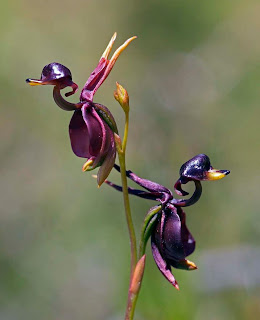The Great Ocean Road is an Australian National Heritage listed 243-kilometre (151 mi) stretch of road along the south-eastern coast of Australia between the Victorian cities of Torquay and Warrnambool. The road was built by returned soldiers between 1919 and 1932, and is the world's largest war memorial; dedicated to casualties of World War I. It is an important tourist attraction in the region, which winds through varying terrain alongside the coast, and provides access to several prominent landmarks; including the nationally significant Twelve Apostles limestone stack formations.
Labels
Amazing Facts
(28)
Architecture
(26)
Places
(25)
Nature
(17)
Science n Technology
(16)
Sports
(4)
Events
(3)
Government
(3)
History
(2)
Friday, May 17, 2013
Wednesday, May 15, 2013
Happy & Smiling Pansies
Pansies are well known as flowers with a “face” and it might make you smile if you look at it: it has two “eyes, a mouth and a tiny nose in the middle”.
Pansies appeared in the early 1800s when William Thompson, an English gardener, bred several species of violas and created in 1839 the “face” type pansies that we know today
Pansies are also known by the name of violas. They have a huge variety of colors (hundreds of varieties) and thrive in cool, spring time conditions. They grow well in containers, rock gardens and around the borders.
Pansies feel best in cool, rich soil in partial shade, but they can tolerate full sun if the summer is not very hot. If they are shaded in the heat of the late afternoon the flowering season of the pansies will be extended
Caleana major, the Flying Duck Orchid
it is a small orchid found in eastern and southern Australia. This terrestrial plant features a remarkable flower, resembling a duck in flight. The flower is an attractant to insects, such as male sawflies which pollinate the flower in a process known as pseudocopulation.In 1986 this orchid was featured on an Australian postage stamp.
Caleana major is encountered as a terrestrial herb, up to 50 cm (20 in) tall. 2-4 flowers grow on the green stem. The single leaf, appears near the base of the stalk. It is usually prostrate, narrow-lanceolate, to 12 cm (5 in) long and 8 mm wide, often spotted. The flower is reddish-brown, 15 to 20 mm long. In rare cases, the flower can be greenish with dark spots. The plant is pollinated by insects. A sensitive strap is attached to the flower, which is triggered by vibration. Flowering occurs from September to January
Caleana major is encountered as a terrestrial herb, up to 50 cm (20 in) tall. 2-4 flowers grow on the green stem. The single leaf, appears near the base of the stalk. It is usually prostrate, narrow-lanceolate, to 12 cm (5 in) long and 8 mm wide, often spotted. The flower is reddish-brown, 15 to 20 mm long. In rare cases, the flower can be greenish with dark spots. The plant is pollinated by insects. A sensitive strap is attached to the flower, which is triggered by vibration. Flowering occurs from September to January
Friday, May 3, 2013
The Grand Palace, Bangkok
The Grand Palace is a complex of buildings at the heart of Bangkok, Thailand.
The castellated walls of the Grand Palace were constructed during the reign of King Rama I in 1782. Later during the reign of King Rama II the Grand Palace and its walls were extended towards the south. Cannon emplacements were replaced with guard houses and were given rhyming names. The northern wall measures 410 metres, the east 510 metres, the south 360 metres and the west 630 metres, a total of 1,910 metres (6,270 ft). There are 12 gates in the outer walls. Inside the palace, there were over 22 gates and a labyrinth of inner walls; however some of these has already been demolished. Around the outer walls there are also 17 small forts. On the eastern wall,
facing Sanamchai Road, there are two throne halls.
Subscribe to:
Comments (Atom)




